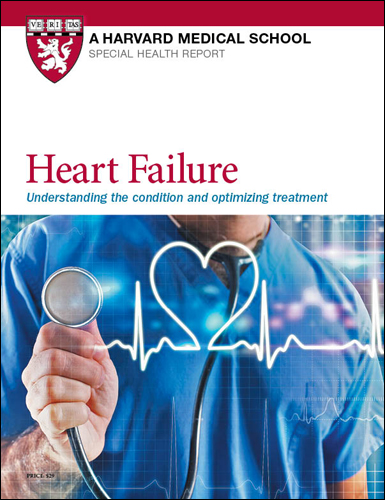Angina: Symptoms, diagnosis and treatments

Angina (pronounced ANN-juh-nuh or ann-JIE-nuh) is pain in the chest that comes on with exercise, stress, or other things that make the heart work harder. It is an extremely common symptom of coronary artery disease, which is caused by cholesterol-clogged coronary arteries. This is the network of arteries that nourish the heart muscle.
Heart disease isn't the only cause of chest pain. Others include tension in the muscles of the chest, heartburn (gastroesophageal reflux), pericarditis, and pleurisy. So, it's important to be able to tell the difference between angina and other types of chest pain because they are treated differently and have different long-term effects on health. Knowing that your chest pain is not angina can be very reassuring.
Symptoms
Angina tends to appear during physical activity, emotional stress, or exposure to cold temperatures, or after big meals. Symptoms of angina include:
- pressure, aching, or burning in the middle of the chest
- pressure, aching, or burning in the neck, jaw, and shoulders (usually the left shoulder) and even down the arm
- a sense of anxiety or uneasiness
When arteries are severely narrowed, angina can also occur at rest. This is called unstable angina.
The pain of angina usually isn't sharp. Instead, it is more a sense of pressure or squeezing. Sometimes it is just an uncomfortable sensation, not really a pain. Angina is not affected by the position of your body or by taking a deep breath, while other causes of chest pain, such as pleurisy or pericarditis, often are.
Angina attacks usually last a few minutes. If it has been triggered by exertion, it usually subsides within a few minutes as you rest. When such pain lasts more than 10 minutes, it could indicate a heart attack. If you have this type of pain and it lasts more than 10 minutes, call 9-1-1.
Diagnosing angina
Your doctor can suspect a diagnosis of angina based on your description of your symptoms, when they appear and your risk factors for coronary artery disease.
Your doctor will likely first do an electrocardiogram (ECG) to help determine what additional testing is needed to confirm the diagnosis.
Standard exercise stress test. If your ECG is normal and you are able to exercise, this test is often done first. It can be done with a treadmill, stationary bicycle, or other exercise machine to get you moving while hooked up to heart-monitoring equipment. It can determine how well the coronary arteries supply blood to the heart when it must work harder, and if the rhythm remains normal. The exercise stress test is generally safe.
Heart imaging. There are a variety of tests that can provide images of the heart to help diagnose angina and also provide information about the amount of coronary artery blockage. Examples include a stress echocardiogram, nuclear stress tests and PET scans. If you are not able to exercise, medications can be injected to increase heart rate and contractions.
Coronary angiogram. This is a special x-ray of the coronary arteries. It is made by inserting a small tube called a catheter into a blood vessel in the groin and maneuvering it into the heart. The catheter releases a fluid called contrast agent that can be seen on the x-ray.
Treatment for angina
Treatment for angina depends on how severe it is, whether it has recently become more severe (even if it is still mild), how much it interferes with your life, and your expectations and goals. Lifestyle changes are sometimes enough to make angina go away, though most people need one or more medications to ease or prevent angina. Some people need a procedure to open or bypass blocked coronary arteries.
Lifestyle changes for angina
Some of the following may help ease angina:
Reduce risk factors. Stopping smoking, losing weight if needed, and lowering high blood pressure, high cholesterol, and high blood sugar can help control angina.
Adjust your daily activities. If certain kinds of activity regularly cause angina, try performing the activity more slowly. Your heart is under more stress in the mornings and after meals, so try reducing physical activity at those times.
Reduce stress and anger. If anger and stress regularly bring on your angina, a stress-reduction program or meditation can help.
Exercise. Even though exercise can bring on angina, a supervised program of exercise can safely strengthen the heart and eventually reduce angina. Start slowly, and gradually build up your level of exercise during optimal times of the day. Your physician can tell you what you can and cannot do.
Heart-healthy eating. Adopting a Mediterranean or other heart-healthy eating strategy can help fight the cholesterol-filled plaque that is responsible for angina.
Medications for angina
Medication also plays an important role in treatment. Several types of medication are to ease or prevent angina. These include:
- nitrates
- beta blockers
- calcium-channel blockers
- aspirin
- statins
- ACE inhibitors
- ranolazine
Nitrates cause the coronary arteries to widen, increasing blood flow through the coronary arteries. They come in several forms. One kind (nitroglycerin) is a pill that you place under your tongue when you first feel pain or discomfort. It should relieve angina within 5 minutes. Long-acting nitrates, taken every day by pill or patch, help prevent angina attacks.
Beta blockers slow the heart rate so the heart doesn't have to work so hard. They reduce the risk of abnormal heart rhythms and lower blood pressure.
Calcium channel blockers lower blood pressure and widen coronary arteries. They are an alternative to beta blockers for people with asthma or chronic obstructive lung disease, heart block and related conduction system abnormalities, or peripheral artery disease.
Aspirin prevents the formation of blood clots in diseased blood vessels. Blood clots are the main cause of heart attack and stroke.
Statins are a family of drugs used to lower cholesterol. In addition to helping your body pull cholesterol out of artery-clogging plaque, they may also reduce inflammation in blood vessels and prevent plaque from breaking open and causing a heart attack.
ACE inhibitors help relax blood vessels throughout the body. This can ease the heart's workload.
Ranolazine reduces the amount of oxygen the heart needs to do its work.
Procedures for angina
When medical therapy doesn't relieve angina, or if it suddenly gets worse, more aggressive treatments such as angioplasty or coronary artery bypass surgery may be needed.
Angioplasty is procedure used to open blocked or narrowed arteries. A doctor inserts a thin tube called a catheter into an artery in the groin or arm and carefully maneuvers it into the blocked artery in the heart. A balloon at the tip of the artery is inflated, flattening the plaque that is blocking the artery. In some cases, the balloon also expands a wire-mesh stent to hold open the artery. After the balloon is deflated, the catheter is removed, leaving the stent in place.
Coronary artery bypass surgery improves blood flow to the heart by diverting blood around a blocked coronary artery. A surgeon uses a blood vessel taken from another part of your body to make a new channel so blood can flow around the blocked coronary artery.
Image: Rawpixel/Getty Images
Disclaimer:
As a service to our readers, Harvard Health Publishing provides access to our library of archived content. Please note the date of last review or update on all articles.
No content on this site, regardless of date, should ever be used as a substitute for direct medical advice from your doctor or other qualified clinician.
















